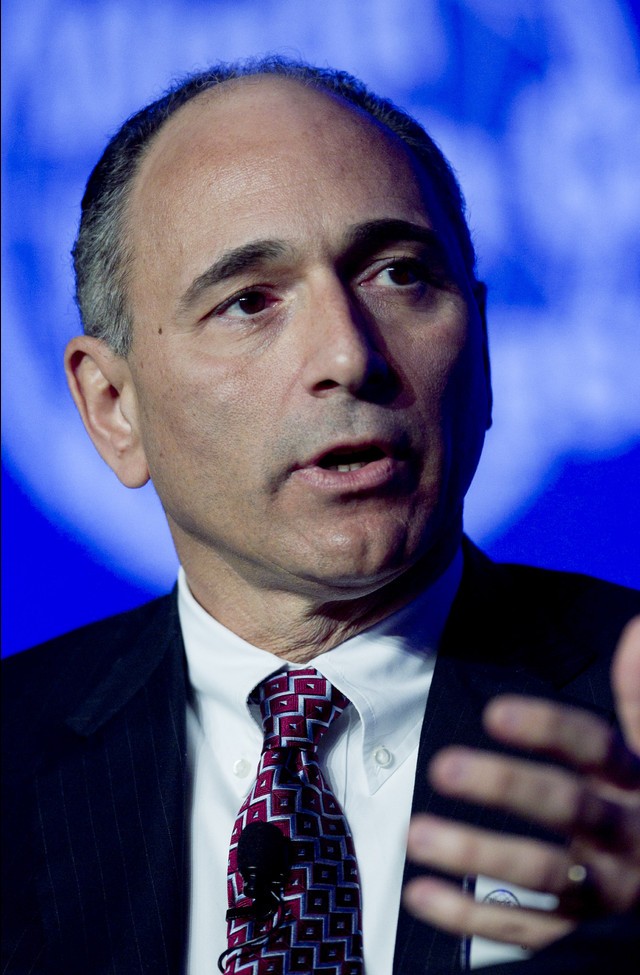Who Doubts Yellen s Policies Summers for One Bloomberg Business
Post on: 9 Май, 2015 No Comment

Photographer: Andrew Harrer/Bloomberg
(Bloomberg) — Janet Yellen is betting she has the formula for fending off deflationary forces. Investors and some of her fellow economists aren’t so sure.
The Fed chair says history and theory suggest wages will pick up as the job market tightens, and prices will rise in line with the Federal Reserve’s 2 percent target. Former Treasury Secretary Lawrence Summers argues policy makers can’t count on this, while Richard Clarida of Columbia University in New York says it hasn’t happened in the last few economic expansions.
Investors have their doubts, too: They expect inflation will run well below the Fed’s target for the next decade, based on trading in U.S. Treasury securities.
“People have no confidence in the central banks being able to fight off deflation,” said Marvin Goodfriend, a former Fed official who is now a professor at Carnegie Mellon University in Pittsburgh, Pennsylvania.
The Fed chair and her colleagues said Jan. 28 that inflation probably will ebb further in the next few months, driven lower by falling energy prices. Over the medium term, they see it rising “gradually toward 2 percent” as the labor market tightens and oil’s impact fades, according to the statement released after their Jan. 27-28 meeting.
Yellen’s predecessor, Ben S. Bernanke, won plaudits in monetary-policy circles when he finally got the Fed to sign on to an inflation target in early 2012. There’s just been one small hitch: Since April of that year, inflation has failed to hit the central bank’s objective. It was 1.2 percent in November.
Target Irony
“The irony is that Bernanke got his inflation target in January 2012, and in almost every month since then they’ve fallen below it,” said Clarida, who is also executive vice president at Pacific Investment Management Co. in Newport Beach, California, which oversees some $1.7 trillion in assets.
Summers said the Fed shouldn’t base its interest-rate decisions on a theory that links changes in inflation to developments in the labor market. That theory, known as the Phillips Curve, posits that wages and prices rise as unemployment falls.
“The Phillips Curve is a constantly changing, ephemeral relationship that does not provide a confident basis for a tightening,” he told a Bloomberg panel at the World Economic Forum in Davos, Switzerland, on Jan. 22.
Summers, now a professor at Harvard University in Cambridge, Massachusetts, said there’s a big risk of the Fed “setting off a spiral towards deflation” by raising rates too soon. “The Fed should not be fighting inflation until it sees the whites of its eyes,” he said. “That’s a long way off.”
No Slam Dunk
Wage growth probably will accelerate as unemployment continues to fall, Clarida said. The jobless rate was 5.6 percent in December, down from a post-recession high of 10 percent in October 2009.
“It’s not a slam dunk” that higher wages will feed through to faster inflation, though — and in fact they haven’t always done so in the past. If productivity picks up, then companies can pay workers more without feeling compelled to raise prices, or they simply can elect to reduce profit margins, which are at all-time highs, he said.
America’s recent economic experience does raise some doubts about the Phillips Curve relationship. In the 1991 to 2001 expansion, inflation fell even as wage growth accelerated and productivity increased. Inflation rose in the upswing that preceded the last recession, but labor compensation did not, as cost-conscious companies cut back on health care and other benefits.
Slow To Act
Goodfriend said much of the concern about deflation now is centered on the euro area, where the European Central Bank has been slow to take action against falling prices. The ECB unveiled a plan last week to buy government bonds, five years after the Fed took that step.

Still, “there is some evidence of a spillover of a deflation scare into the U.S.,” Goodfriend said.
That’s apparent in bond-market trading. The yield on the Treasury’s 10-year note was 1.72 percent at 5 p.m. in New York on Jan. 28, according Bloomberg Bond Trader prices, near the lowest since May 2013.
Yellen herself evinced some concern last year that the standard models central banks use to forecast inflation may be broken. Behind her disquiet: the failure of the models to foresee the path of prices in the U.S. during and after the last recession and in Japan during its deflationary period from 1998 to 2012.
Diminishing Slack
Jon Faust, director of the Center for Financial Economics at Johns Hopkins University in Baltimore and a former Yellen policy adviser, took issue with Summers’s contention that the Fed is basing policy too much on the Phillips Curve. He argues that officials believe inflation will rise at some point as slack in the economy continues to diminish.
The trouble, said former Richmond Fed President J. Alfred Broaddus, is that the central bank “can’t really fine tune inflation.”
He likened the Fed’s task to turning an ocean liner rather than driving a Ferrari. That suggests Yellen and her colleagues may have to wait a while to see if they can lift inflation back up to their goal.
To contact the reporter on this story: Rich Miller in Washington at rmiller28@bloomberg.net
To contact the editors responsible for this story: Chris Wellisz at cwellisz@bloomberg.net Melinda Grenier, Mark Rohner














